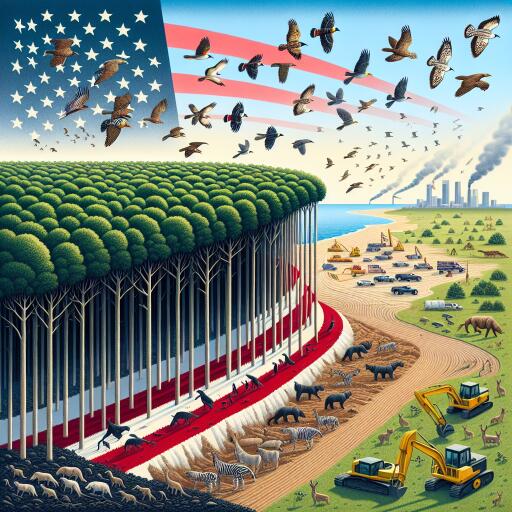
How Habitat Loss Imperils US Wildlife | Earth.Org
In recent history, the world has witnessed the disappearance of iconic species such as the Tasmanian Tiger and the Western Black Rhinoceros. While their losses echo a global environmental crisis, this phenomenon is not restricted to far-flung regions or developing economies. The United States, a nation celebrated for its wealth and technological advancement, faces its own dire conservation challenges.
Habitat loss sits at the core of biodiversity decline, affecting species across the globe. In the U.S., this issue has led to the extinction of over 50 species in the last century and has placed more than a thousand others in endangered or threatened categories. These startling figures highlight a critical disconnect between economic development and ecological preservation, underscoring the urgency for sustainable solutions.
The primary driver of habitat loss is modern society’s ever-expanding demand for land – for agriculture, urban development, and infrastructure. This relentless encroachment forces wildlife into increasingly fragmented habitats, leading to potentially irreversible biodiversity loss and ecosystem dysfunction.
Despite the grim outlook, action and advocacy for environmental conservation can make a difference. Key to reversing these trends are efforts aimed at balancing the needs of human development with the preservation of natural habitats. This entails a complex matrix of considerations ranging from economic to ecological.
Habitat destruction, while beneficial in the short term for economic growth and development, carries profound long-term risks. These include the loss of ecosystem services such as pollination, water purification, and climate regulation. Biodiversity loss also diminishes genetic resources essential for medicine and agriculture, while increasing vulnerability to climate change and zoonotic diseases. The economic repercussions of ignoring these factors in favor of immediate gains can be staggering, necessitating a strategic approach to land management that values long-term ecological health alongside economic objectives.
Fortunately, there is a way forward. Landmark legislation like the Endangered Species Act, alongside current conservation initiatives, provides a framework for recovery. These programs, often fueled by governmental funding and supported by regulation, underscore the critical role of policy in safeguarding natural habitats. However, success also demands public engagement and accountability from those who manage our environmental resources.
The challenges are significant and multifaceted, encompassing habitat loss and degradation, over-exploitation of wildlife, the spread of invasive species, climate change, and pollution. Addressing these issues requires a collective effort. It’s crucial for individuals to demand responsible stewardship of natural resources, challenge the prevailing narrative on economic development at the expense of ecological health, and actively participate in conservation efforts. Our shared future on this planet depends on the decisions we make today, emphasizing the collective responsibility to nurture and protect our natural world for generations to come.





Leave a Reply